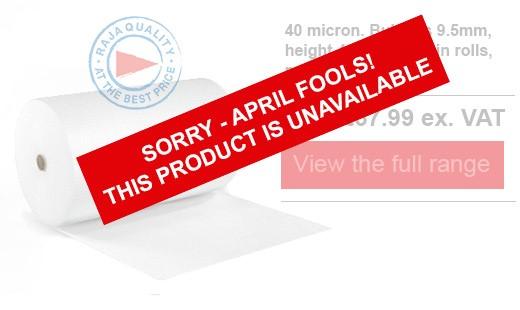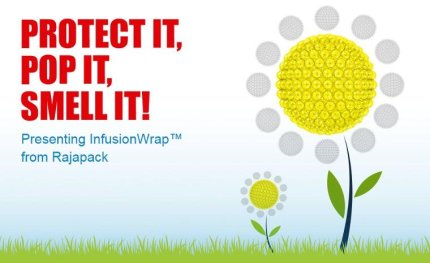April Fools!
We have a little confession to make to you. We haven’t really invented InfusionWrap. We apologise to anyone who got excited about the announcement and hope no one re-wrote their annual budgets around this fake product.
But if you can’t have a little fun on April Fools, then when can you?
Although a couple of patents were gained in America in the 90s for the invention of a scented bubble wrap, we can’t find any evidence that suggests that the product is in development…..or is even a possibility for that matter.
Can we sniff out an opportunity?
That last question got us thinking; if we take a look at the process of how bubble wrap is made, is there any way we can see of introducing a scent or lasting smell?
For those of you who aren’t too sure on how it is made, here is a short walk through of the process.
1) Resin is melted into layers of film
Starting in the form of beads, polyethylene resin is melted down to create the transparent or translucent plastic that forms the bubble wrap. The layers have to be strong enough to properly protect packaged items, but thin enough to pop under the right amount of pressure.
2) Two layers of film are placed together to create a bag
The bag is then filled with air to create a sack.
3) The sack of air is then placed onto a giant vacuum roller

The air sack is placed on to a giant metal roller. The roller looks much like a beehive in the sense that it is covered in small, bubble-sized craters. These craters act as a vacuum which suck in all the air, creating the bubbles that we see in the finished wrap.
4) The cooling plastic sheets bond together
With all the air from the sack now occupying these pockets, the cooling film sheets are left to bond together. The bubble wrap is then taken off of the roller in the form that it will be delivered to the customer.
We can see from this process that the only way of creating a scented version would be to fill the large sack with scented air. However, we couldn’t really guarantee that scent staying fresh for long periods. Most fragrances that last do so because they’re in liquid form.
Did bubble wrap just pop up one day?
Even though scented bubble wrap hasn’t been invented (yet), it is incredible to see just how far the product has come since it was invented in 1957 by Alfred Fielding and Marc Chavannes. In fact, bubble wrap was originally intended as a wacky new form of wallpaper!
The idea came about when the two fused two shower curtains together, trapping bubbles inside.
People really didn’t buy into it as wallpaper, but were much more interested in bubble wrap as an ingenious way of protecting their valuable packages.
From then, it has come on leaps and bounds, with our range of Rajabul, for example, available in more types than ever before.
Innovations in bubble wrap
Bubble Wrap’s versatility has led to the need to create different strengths of the wrap, as well as different materials for a range of protective packaging uses. Here are just a few examples the different kinds of wrap that you can buy today:
Antistatic Wrap: This dissipates surface charges and prevents the build-up of static charge, perfect for protecting sensitive electronics.
Heavy Duty Wrap: Heavy duty bubble wrap offers triple layer protection, with layers of inner and outer film providing extra strength, ideal for larger products.
Recycled Wrap: Made from at least 15% recycled polythene and is fully recyclable after use.
Blanket Wrap: Made from a tough but soft polythene sheet, the blanket wrap combines the protective qualities of bubble and the softness of a tissue layer that protects furniture and delicate surfaces from scratches and marks.
So, we’re sorry again for fooling you with InfusionWrap, but it is worth remembering how awesome bubble wrap can be!
Photo Credit- ‘Wrap‘ by Michael Pardo is licenced under CC by 2.0





















I manufacturer a wide range of bubblewrap, this product can be made however there is no market for it!